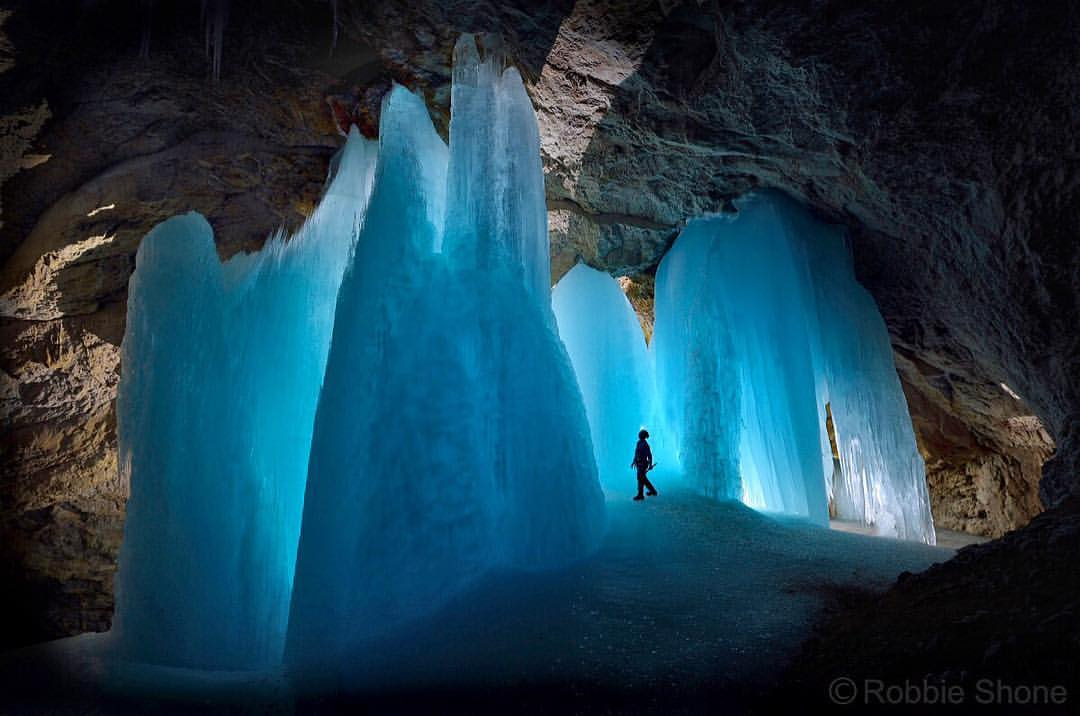
Mountain regions respond sensitively to climate change. Taking advantage of Alpine caves, a team of scientists led by Swiss Paleoclimatologist Dr. Marc Luetscher from the Swiss Institute for Speleology and Karst Studies (SISKA), is working to understand how permafrost has evolved through time. Ice caves form through a combination of snow intrusion and/or congelation of water infiltrating a karst system. Often up to several centuries old, the climate record of this ice remains largely under-studied. Today we are also able to tell if a cave was an ice cave in the past. This is achieved by looking for cryogenic cave calcites. These form when water enters a cave, and freezes and turns to ice. In this process, the water becomes progressively enriched in ions to the point that it becomes super-saturated and precipitates calcite.
Pictured here and in freezing cold temperatures, an explorer is dwarfed by a giant ice formation inside the Halle der Circe in Eiskogelhöhle, Austria. Ice caves like these are common in the Austrian Alps but are seriously under stress due to climate change.
Photo shared from: https://www.instagram.com/p/BfcuC1lAw95/?taken-by=natgeotravel
WOW!!! an cave completely surrounded with ice....what an amazing photo =)
Downvoting a post can decrease pending rewards and make it less visible. Common reasons:
Submit
Hi! I am a robot. I just upvoted you! I found similar content that readers might be interested in:
https://www.facebook.com/RobbieShonePhotography/posts
Downvoting a post can decrease pending rewards and make it less visible. Common reasons:
Submit